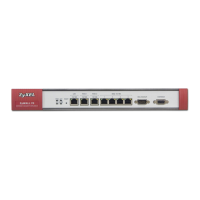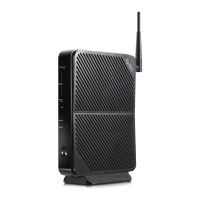Chapter 12 Wireless Screens
ZyWALL 5/35/70 Series User’s Guide
233
The following table describes the labels in this screen.
Table 58 WIRELESS > Wi-Fi > Wireless Card: No Security
LABEL DESCRIPTION
Enable
Wireless Card
The wireless LAN through a wireless LAN card is turned off by default, before you
enable the wireless LAN you should configure some security by setting MAC filters
and/or 802.1x security; otherwise your wireless LAN will be vulnerable upon enabling
it. Select the check box to enable the wireless LAN.
Wireless Card This field displays whether or not a compatible ZyXEL wireless LAN card is installed.
ESSID (Extended Service Set IDentity) The ESSID identifies the Service Set with which a
wireless station is associated. Wireless stations associating to the access point (AP)
must have the same ESSID. Enter a descriptive name (up to 32 printable 7-bit ASCII
characters) for the wireless LAN.
Bridge to Select LAN to use the wireless card as part of the LAN.
Select DMZ to use the wireless card as part of the DMZ.
Select WLAN to use the wireless card as part of the WLAN.
The ZyWALL restarts after you change the wireless card setting.
Note: If you set the wireless card to be part of the LAN or DMZ, you
can still use wireless access. The firewall will treat the wireless
card as part of the LAN or DMZ respectively.
Hide ESSID Select this to hide the ESSID in the outgoing beacon frame so a station cannot obtain
the ESSID through scanning.
Channel ID This allows you to set the operating frequency/channel depending on your particular
region. Select a channel from the drop-down list box.
RTS/CTS
Threshold
Use RTS/CTS to reduce data collisions on the wireless network if you have wireless
clients that are associated with the same AP but out of range of one another. When
enabled, a wireless client sends an RTS (Request To Send) and then waits for a CTS
(Clear To Send) before it transmits. This stops wireless clients from transmitting
packets at the same time (and causing data collisions).
A wireless client sends an RTS for all packets larger than the number (of bytes) that
you enter here. Set the RTS/CTS equal to or higher than the fragmentation threshold
to turn RTS/CTS off.
Fragmentatio
n Threshold
This is the threshold (number of bytes) for the fragmentation boundary for directed
messages. It is the maximum data fragment size that can be sent.

